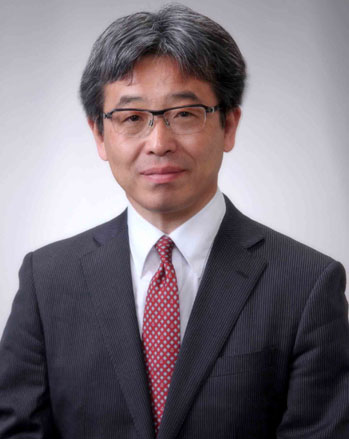Prof. Dr. István Komlósi DSc
Full professorDepartment of Animal Husbandry
Institute of Animal Science, Biotechnology and Nature Conservation
Faculty of Agricultural and Food Sciences and Environmental Management
University of Debrecen, Hungary
Speech Title: RESILIENT SOLUTIONS FOR DAIRY FARMING
Abstract: Seventeen institutes and agencies collaborated with 120 pilot farms across 14 EU countries to find sustainable practices in the dairy industry. They focused on improving technical and environmental efficiency, animal welfare, social responsibility, and economic viability with social resilience. Instead of applying a top-down method, they used a bottom-up approach, collecting and organizing proven solutions into factsheets for farmers.
Farmers identified needs for improving technical efficiency, including new early disease detection tools, preventative strategies, innovative feeding systems, and advanced silage production and management technologies. For environmental and animal welfare, they emphasized the importance of better calf and cow welfare, clear communication, and transparency to help the public understand agriculture's societal role. They also pointed out the need for energy efficiency, renewable energy use, and innovative, animal-friendly housing. To enhance economic efficiency and social resilience, critical areas include achieving a balanced work-life, fair compensation, flexibility, access to reliable information, knowledge sharing, training, and economic tools for better farm management decisions.
Keywords: economic, social, environmental resilence, dairy.
Biography: Dr István Komlósi is a professor at the Faculty of Agriculture-, Food Science and Environmental Management, University of Debrecen, where he holds leader positions (vice-dean, dean). He graduated from the University of Agriculture (now University of Debrecen) in 1985, and started his academic career in 1987 at the same university. He conducted postgraduate studies at the University of New South Wales, Kensington, and the University of New England, Armidale, Australia studying Breeding programs, Quantitative genetics, and Biostatistics (1989/90). He was a postgraduate student at the University of Wales, Bangor, UK (1991/94) and received his PhD degree in 1994. The title of his thesis was ”Computer image analysis in sheep to predict carcass conformation”. He initiated TEMPUS projects and national research projects and was a referee for EU research projects. His major areas of research are breeding programs and breeding value evaluation. Recently he broadaned his reasearch area with lean management. Contributed to the Hungarian national breeding programs of sheep, pig and beef breeds. Published 307 scientific papers, of which 43 are in impact factor journals, as an (co)author. His area of teaching is Principles of Animal Breeding, Biostatistics, Animal Genetics. He (co)supervised 10 PhD students and currently advises on 3. As a visiting lecturer at Curtin University, Perth Australia he taught Applied Statistics (2004/5). He was awarded the of Doctor of Science by the Hungarian Academy of Science (2013). He is the head of Animal Science Doctoral School and the Institute of Animal Science, Nutrition and Biodiversity at University of Debrecen. He received a recognition from the Ministry of Education (2012) and Doctor Honoris Causa, from University of Kaposvár (2020).
Prof. Dr. Amand László Palkovics DSc
Full professorDepartment of Plant Science, Albert Kázmér Faculty of Mosonmagyaróvár, Széchenyi István University, Mosonmagyaróvár, Hungary
Speech Title: Viruses as Conquerors of Plants
Abstract: We cannot learn much about the origin of plant viruses from fossils. The first observed viral disease was tulip color breaking in 1576, which is associated with the name of Carolus Clusius, the so-called Rembrandt tulips. The fact that these pathogens actually exist is attributed to Adolf Eduard Mayer, who performed the first experiments related to tobacco mosaic disease. In 1883, he established that tobacco mosaic disease can be transmitted by the tissue sap of the infected plant.
The real breakthrough was the work of Dimitrij Ivanovskij in 1892 and Martinus W. Beijerinck in 1898, who established that the tobacco mosaic disease can be caused by a pathogen that is smaller than bacteria, this was the first virus to be identified, the tobacco mosaic virus (TMV, tobacco mosaic virus). In 1929, J.P. McKinney discovered cross-protection, and in 1935, Wendel Meredith Stanley proved the crystallization of the tobacco mosaic virus, i.e. its protein nature, for which he received the Nobel Prize in Medicine. In 1937, F. C. Bawden and N. W. Pirie established the nucleoprotein nature of TMV. In 1939, G. A. Kausche, E. Pfankuch and H. Ruska made the first electron micrograph of the tobacco mosaic virus. In 1956 F.H.C. Crick and J.D. Watson created the structural model of TMV RNA. In 1982, P. Goelet, G.P. Lomonosoff, P.J.G. Akam, M.E. Gait and J. Karn revealed the primary structure (nucleotide sequence) of TMV RNA. In 1984, P. Alhquist synthesized the first infectious cDNA clone in vitro. In 1986, P. A. Powell-Abel et al. produced the first transgenic virus-resistant plant.
Ede Teller, the father of the hydrogen bomb, once said in his lecture at the Hungarian Academy of Sciences that our world is so complicated that in the near future we may only be able to understand the functioning of viruses as the simplest "organisms". Indeed, if we look back at the history of virology, which is slowly approaching a century and a half, it still has things to discover for us.
With the development of infectious virus clones and molecular biology, it became possible to recognize the properties of individual genes of viruses, and it became known how they were able to adapt and conquer plants. How the gene encoding the movement protein was stolen from the plant genetic material for their spread in plants. How can they even infect plants and get them to produce viral proteins. How they can multiply and replicate. During coexistence, how proteins were formed that block the plant's defense mechanism at several points. How they adapted to spread by insect vectors.
Learning about the success, evolution and functioning of viruses made it possible to develop defense strategies against viruses we can use viruses as vectors to produce human/animal therapeutic proteins and vaccines in plant cells as well.
Biography: László Amand Palkovics studied Horticulture Engineering, Plant Protection Engineering at University of Horticulture in 1985, got PhD degree from Agricultural University of Gödöllő in 1997, habilitation at Corvinus University of Budapest 2006, DSc from Hungarian Academy of Sciences in 2006 and from 2007 full professor. From 1985 to 1989 he was research associate at the Plant Breeding Department of the University of Horticulture, Budapest. From 1989 to 2003 he was research scientist at the Agricultural Biotechnology Center. From 2003 to 2021 he was head of Plant Pathology Department of Szent István University. From 2012 to 2020 held various positions at the university, thus vice-rector at Corvinus University of Budapest, and vice-rector and rector of Szent István University. From 2021 professor, and distinguished professor of Széchenyi István University, in addition to teaching, he holds many university positions.
László Amand Palkovics is author, respectively co-author, of more than 500 research papers. He is member of different scientific organizations, editor-in-chief of a Hungarian research journal, editor and reviewer of numerous international journals. He has successfully applied for many research funds. His main research interests are identification of new plant pathogenic viruses bacteria and fungi, molecular diagnostics of plant pathogens, development of diagnostic methods, development of environmentally friendly crop protection technologies.
Prof. Emeritus Hisayoshi Hayashi
University of Tsukuba, Tsukuba, JapanSpeech Title: Buckwheat Research, My Life's Work
Abstract: Buckwheat, a minor crop, is grown in 19 countries, including Russia, China, and Ukraine, with a total production of 2.2 million tons, or only 0.1% of the total cereal production of 3.06 billion tons. As a result, there are few researchers, and the development of cultivation technologies and variety breeding of buckwheat has lagged behind. Buckwheat has become a crop that characterizes local food culture due to the small number of countries and production. Buckwheat noodles, or “soba kiri” in Japanese, which is simply buckwheat flour kneaded with water and cut into noodle strips, is a buckwheat dish that is representative of Japanese food culture. Because the cooking process is simple and no additives are added, it allows you to taste the differences in flavor depending on the variety. Although the taste of buckwheat noodles is influenced by many factors, such as growing area, cultivation method, cooking method, etc., the variety is the most important. Maintaining varieties and a stable seed supply are the most fundamental aspects of agriculture, but the situation varies greatly from crop to crop. In Japan, the Main Crop Seeds Act was repealed in 2018. As a result, there is no legal support for seed production, and the situation has changed. How is seed production carried out in the minor crop of buckwheat? Does the seed quality of home seed-raising buckwheat change if the seed is not renewed? I changed the buckwheat cultivar in 2008 and continued home seed-raising for the next 14 years without using any seed production techniques. These buckwheat seeds from different years were then grown simultaneously under the same conditions to compare their characteristics. Does home seed-raising of buckwheat really affect seed quality? If so, for how many years would this be acceptable? The keynote speech will present the latest research on buckwheat, which has become the life's work of the speaker, and the national and international situation of this minor crop.
Biography: Dr. Hisayoshi Hayashi graduated from University of Tsukuba in 1980. After working as an extension officer in Nagano Prefecture for one year, he moved to Chushin Agricultural Experiment Station, where he worked in the field crop cultivation department for six years. He then moved to University of Tsukuba, where he served as a professor at the Laboratory of Crop Production Systems and the Laboratory of Crop Science, before being appointed professor emeritus at University of Tsukuba in April 2023. He is a former president of the Japanese Society of Farm Work Research and a fellow of Japan Association of International Commission of Agricultural and Biosystems Engineering. Since April 2023, he has been leading training programs for extension workers, researchers, and government officials in developing countries as a training advisor at Japan International Cooperation Agency Tsukuba Center (JICA Tsukuba).




